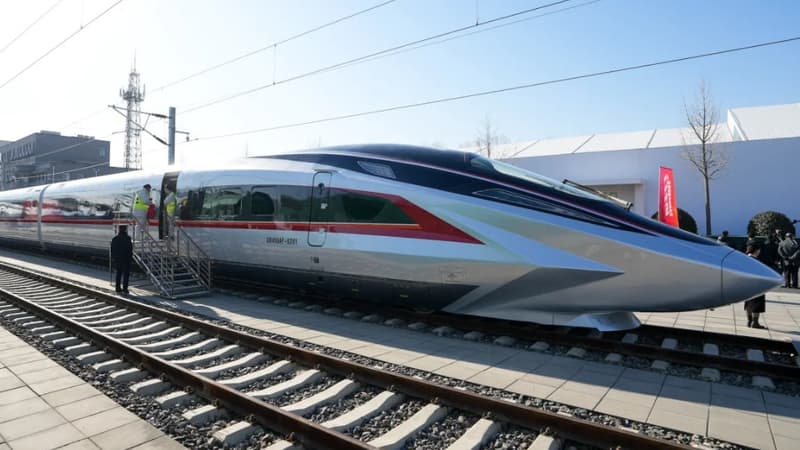In just over a decade, China has become the country of high railway. The first line was inaugurated in 2008 and since then, the country has continued to develop its network that now reaches 48,000 kilometers, connecting 97% of large cities. It is the largest on the planet, it even represents 70% of the world supply. In these ways, the Middle Empire also intends to roll the fastest conventional trains. And this is already the case with the CR400 that reaches the commercial speed of 350 km/h, or 30 km/h more than the SNCF TGV whose maximum cruise speed is 320 km/h.
But the country wants to go further. As Rail Europe News points out, the official objective now is to reach 400 km/ha next year, or even at the beginning of 2027. Enough to put Shanghai at 2:30 AM of Beijing (1,120 kilometers). It will be a matter of trusting the new CR450 train manufactured by the Giant China State Railway Group (CRCC, manufacturer and state operator). A first prototype was presented in 2023, it was presented as “the fastest speed commercial train in the world.” The first tests went to 453 km/h.
To achieve this speed, the driving nose has still extended for more aerodynamics, which makes it particularly aggressive visually. The train architecture allows to reduce the total weight by 10% compared to the previous model, while the braking yield has improved by 20%.
Inside, engineers were clearly inspired by the aeronautical universe with business cabins and first to the concept of “capsules” that offers a multitude of variations.
And if the CR450 is clearly intended for the domestic market, China and its CRCC Navy wing would make a Trojan horse to send European tenders and thus get to rub the Alstom, Siemens, Hitachi, CAF or Talgo models.
“The catenary wall”
If the concept is promising, the question of the consequences in the infrastructure (track and catenary) and the equipment of said speed arises. In fact, above 320 km/h, wear becomes exponential, which increases maintenance cost. Therefore, infrastructure adaptations are underway such as the modernization of catenario systems and the optimization of elders and welded joints.
In addition, above a certain speed, the train can face what is called “the wall of the catenary.” Explanation: driving, a high speed train produces waves that extend at 500 km/h in the feed cables (catenary). If the train reaches this speed more or less, you can lose contact with this high voltage cable. What degrades the feeding of the train and endangers the equipment.
So many reasons that led CNCF to limit the maximum commercial speed of its TGV to 320 km/h, even the last one, The TGV m Able to reach 350 km/h will lead to this speed. It will be in the French rails in the first months of 2026. Finally, with stops at the course stations, the braking is numerous and the gain in time is quite low with a few tens of km/h in addition, the SNCF underlines.
What are the fastest rail trains in the world (at commercial and advanced speed)?
- CR400 Fuxing and Harmony (China): 350 km/h – 420 km/h
- ICE3 (Germany) – 330 km/h – 407 km/h
- LE TGV (France) – 320 km/h – 575 km/h
- The Shinkansen (Japan) – 320 km/h – 443 km/h
- Al Boraq (Morocco) -320 km/h -357 km/h
- AVE S -103 (Spain) – 310 km/h – 403 km/h
- KTX (South Korea) – 305 km/h – 421 km/h
- The frequency train 1000 (Italy) – 300 km/h – 394 km/h
- High Speed Railroad High (Saudi Arabia) – 300 km/h
Source: BFM TV


